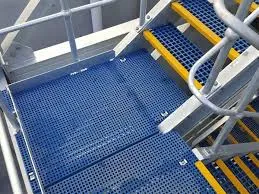
-
 Afrikaans
Afrikaans -
 Albanian
Albanian -
 Amharic
Amharic -
 Arabic
Arabic -
 Armenian
Armenian -
 Azerbaijani
Azerbaijani -
 Basque
Basque -
 Belarusian
Belarusian -
 Bengali
Bengali -
 Bosnian
Bosnian -
 Bulgarian
Bulgarian -
 Catalan
Catalan -
 Cebuano
Cebuano -
 China
China -
 China (Taiwan)
China (Taiwan) -
 Corsican
Corsican -
 Croatian
Croatian -
 Czech
Czech -
 Danish
Danish -
 Dutch
Dutch -
 English
English -
 Esperanto
Esperanto -
 Estonian
Estonian -
 Finnish
Finnish -
 French
French -
 Frisian
Frisian -
 Galician
Galician -
 Georgian
Georgian -
 German
German -
 Greek
Greek -
 Gujarati
Gujarati -
 Haitian Creole
Haitian Creole -
 hausa
hausa -
 hawaiian
hawaiian -
 Hebrew
Hebrew -
 Hindi
Hindi -
 Miao
Miao -
 Hungarian
Hungarian -
 Icelandic
Icelandic -
 igbo
igbo -
 Indonesian
Indonesian -
 irish
irish -
 Italian
Italian -
 Japanese
Japanese -
 Javanese
Javanese -
 Kannada
Kannada -
 kazakh
kazakh -
 Khmer
Khmer -
 Rwandese
Rwandese -
 Korean
Korean -
 Kurdish
Kurdish -
 Kyrgyz
Kyrgyz -
 Lao
Lao -
 Latin
Latin -
 Latvian
Latvian -
 Lithuanian
Lithuanian -
 Luxembourgish
Luxembourgish -
 Macedonian
Macedonian -
 Malgashi
Malgashi -
 Malay
Malay -
 Malayalam
Malayalam -
 Maltese
Maltese -
 Maori
Maori -
 Marathi
Marathi -
 Mongolian
Mongolian -
 Myanmar
Myanmar -
 Nepali
Nepali -
 Norwegian
Norwegian -
 Norwegian
Norwegian -
 Occitan
Occitan -
 Pashto
Pashto -
 Persian
Persian -
 Polish
Polish -
 Portuguese
Portuguese -
 Punjabi
Punjabi -
 Romanian
Romanian -
 Russian
Russian -
 Samoan
Samoan -
 Scottish Gaelic
Scottish Gaelic -
 Serbian
Serbian -
 Sesotho
Sesotho -
 Shona
Shona -
 Sindhi
Sindhi -
 Sinhala
Sinhala -
 Slovak
Slovak -
 Slovenian
Slovenian -
 Somali
Somali -
 Spanish
Spanish -
 Sundanese
Sundanese -
 Swahili
Swahili -
 Swedish
Swedish -
 Tagalog
Tagalog -
 Tajik
Tajik -
 Tamil
Tamil -
 Tatar
Tatar -
 Telugu
Telugu -
 Thai
Thai -
 Turkish
Turkish -
 Turkmen
Turkmen -
 Ukrainian
Ukrainian -
 Urdu
Urdu -
 Uighur
Uighur -
 Uzbek
Uzbek -
 Vietnamese
Vietnamese -
 Welsh
Welsh -
 Bantu
Bantu -
 Yiddish
Yiddish -
 Yoruba
Yoruba -
 Zulu
Zulu
Exploring the Design and Uses of Tapered Drill Strings in Various Industries
A Closer Look at Tapered Drill Strings Design and Applications
Tapered drill strings represent a significant advancement in drilling technology, marrying efficiency with enhanced performance in a variety of geological conditions. This article delves into the design intricacies and applications of tapered drill strings, shedding light on why they are becoming increasingly preferred in the drilling industry.
Design Features of Tapered Drill Strings
At the core of the tapered drill string design is the concept of varying the diameter of the drill pipe along its length. Typically, a tapered drill string starts with a larger diameter at the surface and narrows down as it progresses into the borehole. This design is not merely aesthetic but serves multiple practical purposes.
1. Weight Distribution One of the main advantages of a tapered drill string is its ability to distribute weight more efficiently throughout the length of the drill string. By using larger diameters at the surface, the string can support more weight, reducing the chance of buckling or failure under heavy loads. The tapering allows for a gradual transition, minimizing stress concentrations that could lead to fractures in the pipe.
2. Reduced Hydrodynamic Resistance The tapered design allows for better fluid dynamics when drilling. As the drill string narrows, it helps to reduce the drag on the pipe which can lead to higher rates of penetration (ROP). A lower hydrodynamic resistance translates to less energy consumption, making drilling operations more efficient.
3. Enhanced Bit Performance Tapered drill strings can be paired with specific types of bits that are optimized for different formations. The diameter reduction ensures that the bit has better control and can effectively remove cuttings from the wellbore, further enhancing drilling efficiency.
4. Customization and Flexibility The design of tapered drill strings can be customized according to the specific needs of a drilling project. Engineers can adjust the degree of tapering and the dimensions of the drill string to suit the target depth, geological conditions, and expected performance outcomes.
tapered drill string a closer look at its design and applications

Applications of Tapered Drill Strings
The applications of tapered drill strings are wide-ranging, with industries from oil and gas to mineral exploration benefiting from their unique properties.
1. Oil and Gas Drilling In the oil and gas sector, tapered drill strings are instrumental in reaching deeper reservoirs that require advanced drilling techniques. The ability to manage weight and effectively remove cuttings makes these strings invaluable for offshore drilling, where environmental conditions pose significant challenges.
2. Geothermal Energy As the world pivots towards renewable energy sources, geothermal drilling has gained prominence. Tapered drill strings are often used in geothermal applications where drillers require precision and reliability at great depths and varying pressures. The consistent performance of tapered strings in these scenarios can lead to more successful projects.
3. Mineral Exploration and Mining Tapered drill strings are also deployed in mineral exploration, where the need to penetrate variable geological formations is critical. Their ability to optimize penetration rates while maintaining borehole integrity is especially beneficial when searching for metals and minerals buried deep within the Earth.
4. Horizontal Drilling Applications In horizontal drilling, where the drill string must navigate through complex formations, the tapered design provides the necessary flexibility and strength. The varying diameter helps maintain stability while also enabling better directional control during drilling operations.
Conclusion
Tapered drill strings epitomize the evolution of drilling technology, combining design efficiency with versatile applications. Their unique characteristics not only enhance drilling performance but also reduce operational costs and environmental impact. As the demands of the mining, oil, and gas industries grow, the adoption of tapered drill strings is likely to become more widespread, paving the way for more efficient and sustainable drilling practices. Embracing such innovative technologies is essential for meeting the challenges of modern drilling and resource extraction.









